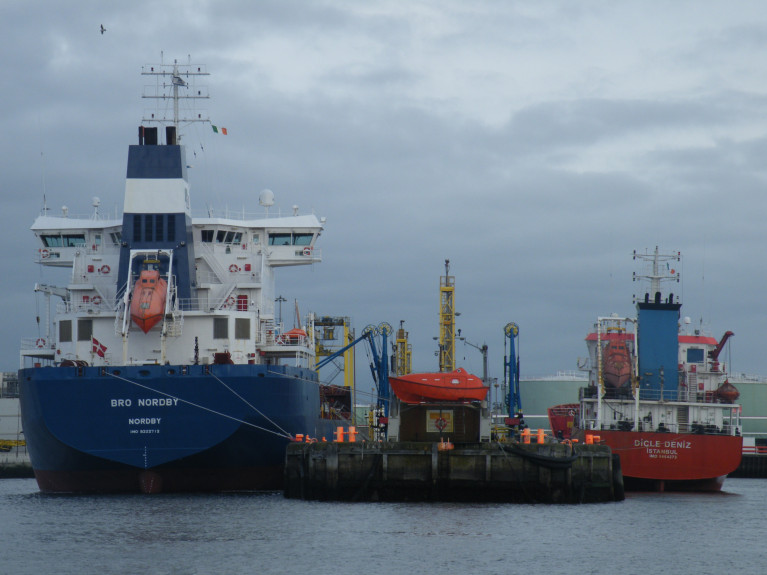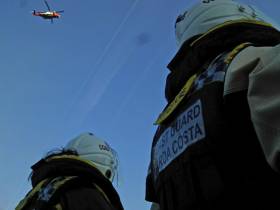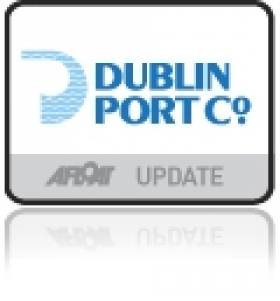Displaying items by tag: Dublin Airport
Dublin Port Jet Fuel Pipeline Project Puts Major Traffic Plan In Place Near Dublin Airport
On a busy road route near Dublin Airport, a major traffic plan comes into operation from this week as works to lay a new jet fuel pipe between Dublin Port and the airport continues.
As Dublin Gazette reports, the second phase of construction on the pipeline at Stockhole Lane/Clonshaugh Road got under way on Monday, with a traffic plan in place for the next three months.
The €20m project is designed to provide a “sustainable” means of aviation fuel supply to Dublin Airport, replacing tanker deliveries with a 14.4km steel pipe tunnelled from Dublin Port to the airport.
The pipeline will remove more than 30,000 fuel tanker trips each year from public roads, with significant environmental benefits including a reduction in traffic volumes, emissions, accidents, road damage and noise.
The pipe will dissect a busy residential belt of north Dublin including East Wall, Fairview, Marino, Clontarf, Artane, Coolock, Darndale, Clarehall and Burnell.
For more on this underground construction project click here.
New Coastguard Helicopter Hangar For Dublin Airport
#Coastguard - This month sees the start of construction of a new hangar at Dublin Airport for the Irish Coast Guard helicopter fleet, as Coast Monkey reports.
The new operations centre at the current base for Rescue 116 comes half-way into CHC Ireland’s 10-year contract to provide coastguard search and rescue services.
Works to be completed by the middle of next year will see the demolition of the existing 600 sqm hangar with a 2,000 sqm facility from where Ireland’s four SAR bases — at Dublin, Sligo, Shannon and Waterford — will be co-ordinated.
Coast Monkey has more on the story HERE.
Hennigan Home From Record-Breaking Row
#Rowing: Ocean rower Gavan Hennigan arrived in Dublin Aiport today to a warm welcome from family, friends and supporters. The Galway man, who rowed across the Atlantic from the Canaries to Antigua in a new record time for a solo oarsman for this course of 49 days 11 hours 37 minutes and 21 seconds, looked thin but healthy. “This is nice, but it is a huge contrast to what I was at ten days ago,” he said. Did he find it strange being on dry land? “Yes. I enjoy the trappings of the modern world, but I miss the sea.” He spoke of feeling that there was “unfinished business” on the ocean, though any new plans are under wraps.
One of the first to greet him was his mother, Julie. His mother’s father, John Egan, had been a Gaelic footballer with Castlebar Mitchels, and Hennigan took his grandfather’s medals with him on the ocean row for inspiration. John Egan captained three consecutive county senior championship winning teams, in 1930, 1931 and 1932.
Opposition to €20m Aviation Fuel Pipeline Planned to Dublin Airport
#OppositionFuelPipe - Residents living in Dublin along the route of a planned €20m aviation-fuel pipeline to Dublin Airport have raised safety concerns, according to yesterday's Irish Examiner.
Last month, Dublin City Council gave the green light to Fingleton White Ltd for the 11km section of the pipeline that passes through city council territory.
In June, Fingal County Council granted planning for the remaining 3km of the pipeline, which commences at Dublin Port.
The Fingal decision wasn’t appealed to An Bord Pleanála, but three appeals have been lodged by parties against the City Council decision, with the board ruling out a fourth appeal, lodged by Deputy Tommy Broughan, on a technicality.
Fingleton White say that the fuel demand at Dublin Airport results in 15,000 tanker journeys a year to Dublin Port and that a UK study has concluded “that the operation of the proposed pipeline has a significantly lower level of risk”.
The newspaper has more coverage here.
Dublin Port Fuel Pipeline to Link Dublin Airport
#FuelPipeline – The Irish Times reports that an aviation fuel pipeline between Dublin port and Dublin airport is to be lodged with a planning application to City and Fingal councils in the coming weeks.
The project envisages replacing existing road tanker traffic with direct pipeline supply and would involve major works along suburban routes such as the Malahide Road.
The pipeline project proposed by a company called Independent Pipeline Company, is backed by Co Laois-based engineering concern Fingleton White, and Dublin-based fuel transporters Reynolds Logistics.
Fingleton White previously received planning permission for an underground pipeline between the port and airport in 2001, but this was never built due to uncertainty in the aviation industry after the attack on New York's Twin Towers.
The original route of the pipeline was via East Wall and Clonliffe roads to Drumcondra and onwards via Whitehall and Santry to the airport. For much more on this story, click HERE.
Tanker and Lifeboats Conduct Emergency Exercises off Dalkey Island
Crew kitted in similarly bright orange coloured sea safety-survival suits entered the lifeboat before it plunged into the water. The activity was observed through the binocular-scope which overlooks Coliemore Harbour with excellent views across the sound to Dalkey Island, Dublin Bay and Howth Peninsula.
The binocular-scope does not require payment to operate and was unveiled in 2008 in memory of local resident the late Dr. John de Courcy Ireland, the 'father' of maritime Ireland (to read more click HERE). He was for 26 years a honorary secretary of the local RNLI station in Dun Laoghaire and a staunch campaigner of Irish maritime affairs.
Each Monday a routine lifeboat practice is conducted by the 47ft Trent class ALB (all-weather lifeboat) RNLB Anna Livia (info and PHOTO). Last night's drill also involved the new D-class ILB (inshore lifeboat) RNLB Réalt na Mara which was named earlier this year by Kathy Kenny, wife of RTE presenter Pat Kenny.
Under the cover of darkness the crew of the ILB Realt na Mara simulated an 'injured casualty' on the island where the casualty was prepared to be taken off by stretcher from the island's small harbour. From there the casualty was transferred to the larger RNLB Anna Livia which lay offshore. During the exercise, powerful searchlight beams from the ALB provided essential light to assist in the transfer operation.
Asides the lifeboats, there is plenty of wildlife to observe on the rocky outcrops at Maiden Rock, Clare Rock and Lamb Island, which forms the second largest island after the main island of 22-acres, where a resident herd of goats have been part of the local community for over 200 years.
As for the South Korean built Cumbrian Fisher, she too has close connections with these waters as she was named in Dublin Port in 2005. She is a frequent caller to Dublin bringing bulk liquid products from the oil refinery in Milford Haven, Pembrokeshire which is a major supplier, serving the demands of the capital.
Dublin Port has two oil jetties which cater for four tankers, where bitumen, chemicals, liquid petroleum gases, molasses and oil are handled on a 41-hectare zone with storage for 330,000 product tonnes to include 6,000 tonnes of LPG. In addition aviation fuel is frequently delivered to the terminal to satisfy the constant demand for aircraft using Dublin Airport.
Cumbrian Fisher alongside her sister Clyde Fisher where built for James Fisher & Sons and in recent years they have tended to take anchorage off Dalkey Island and off the Nose of Howth. In comparison the vast majority of vessels anchor in Dublin Bay which is divided into quadrants for the purposes of anchorage allocation.
Before the completion of the South Wall in Dublin Port, which considerably improved safer access of vessels entering the River Liffey, it was the relative deeper and sheltered waters of Dalkey Sound which were used instead as Dalkey acted as the principle port for Dublin between 14-17th centuries.
Vessels would convey cargoes which were taken to and fro by lighter to the coast where it was carried by horse and cart to nearby Dalkey before onward travel across the exposed plains to Dublin City.
To learn more about Dalkey's medieval maritime heritage with its relationship with the capital of Dublin in addition the use of Dalkey Quarry in the construction of (Kingstown) Dun Laoghaire Harbour, visit the Dalkey Castle & Heritage Centre. To read more go to www.dalkeycastle.com in addition to further information about Dalkey including the local community council newsletters click HERE.
- Dublin Bay
- Dublin Airport
- Dublin Bay News
- Commissioners of Irish Lights
- Irish Lights
- coliemore harbour
- Pembrokeshire
- Dalkey Island
- Port of Dublin
- River Liffey
- Ports and Shipping News
- The Muglins
- Coastal Notes
- Howth Peninsula
- Pat Kenny
- Dalkey Sound
- Lighthouse news
- Irish Lighthouses
- Cumbrian Fisher
- Jas Fisher & Sons
- Clyde Fisher
- Milford Haven Oil Refinery
- Dalkey Castle & Heritage Centre
- Dr. Ireland
- Dr. John de Courcy Ireland
- Irish maritime historian
- Kingstown Harbour
- Kathy Kenny
- RTE presenter Pat Kenny
- South Wall Dublin Port
- Medieval Dalkey
- Dalkey Quarry
- Aviation fuel
- Dalkey Tidy Towns Committee
- Nose of Howth
- Dublin Port Oil Jetty Terminal
- Dalkey Community Council
- Dalkey Island Goats
































































